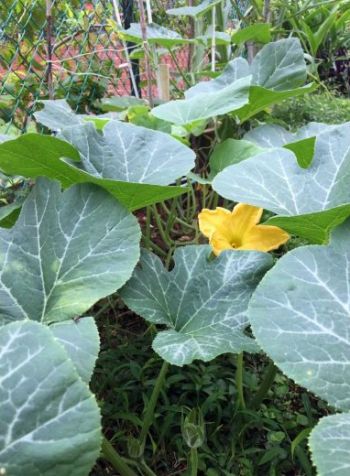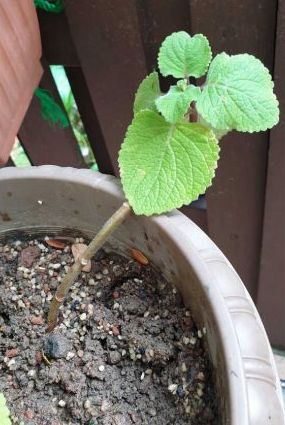Gardening FAQ #21 – What You Need To Know
In this article, we share when pollination is needed for fruit, what is indian borage and much more. Let’s go through the common gardening FAQ, problems and solutions you need when growing your plants either indoor and outdoor.
Pumpkin may need pollination to fruit – a common question in gardening FAQ
 I planted pumpkin with seeds taken from the fruit I bought from the market. It grew and bloomed, but the flowers dropped one by one and, to date, there is no fruit. Why is this so?
I planted pumpkin with seeds taken from the fruit I bought from the market. It grew and bloomed, but the flowers dropped one by one and, to date, there is no fruit. Why is this so?
A pumpkin vine generally produces an abundance of male flowers which appear first on the plant. Female flowers come slightly later.
They have a “miniature fruit” behind the whorl of petals which is the ovary of the flower.
Male flowers do not have this and they do not produce fruit. As a result, they will drop off after they open and fade.
If your female flowers do not lead to fruit, you may want to check if there are natural pollinators in your garden such as bees, which do the pollination work.
The usage of garden pesticides and mosquito fogging can also lead to a lower natural bee population.
If this is the case, you can perform hand pollination – you take pollen from the male flowers and transfer it to female ones.
Below is a great video guide on this procedure on how to successfully find the male and female pumpkin flowers and then carefully transfer pollen from the male flower to the female flower. After this successful pollination, you can then see the baby pumpkins grow to full size.
Plant is a close relative of the Indian borage
 I was given a cutting of this plant. Its leaves have a strong lemon smell and are big like the Indian borage’s. However, the leaves feel papery. What plant is this? I was told the leaves can be made into a drink to soothe sore throats.
I was given a cutting of this plant. Its leaves have a strong lemon smell and are big like the Indian borage’s. However, the leaves feel papery. What plant is this? I was told the leaves can be made into a drink to soothe sore throats.
The plant is botanically known as Plectranthus zeylanicus. It is reported to be endemic to Sri Lanka and its Sinhalese name is Iruveriya.
There is some confusion over its identity. It is not to be mistaken for its close relative, the Indian borage (Plectranthus amboinicus), though the two species look very similar.
This plant is sometimes called “lemon balm” due to its citrusy scent. However, the true Lemon Balm (Melissa officinalis) is another plant species altogether.
The Plectranthus zeylanicus is reportedly used in Ayurvedic medicine for the treatment of ailments such as fever, eye issues and diarrhoea.
If you want to grow this under a well-controlled environment, read our post on Guide to Growing Tents.
Wilting seedlings may be due to transplant shock
I got my seeds from the market sprouted very well. However after I transplanted them into a bigger pot, they wilted. What happen?
The issue could be due to transplant shock. When transplanting the seedlings, did you disturb the roots excessively, such as removing soil from the roots? Or was a clump of seedlings split apart to be planted individually?
Either operation will damage the seedlings’ roots and cause the plants to suffer transplant shock. Damaged roots are not able to uptake water for the plant and it will wilt as a result. If this is not managed properly, affected seedlings will dry out and die.
It is better to start seedlings in a seedling tray. They can develop a good root system that wraps around the growing media and be removed from the tray as seedling plugs with minimal damage to the roots. Seedling plugs can then be moved to their final location with a lower risk of transplant shock.
If you want to do such transplant easily, you should explore using grow bags. See my other post on grow bags.